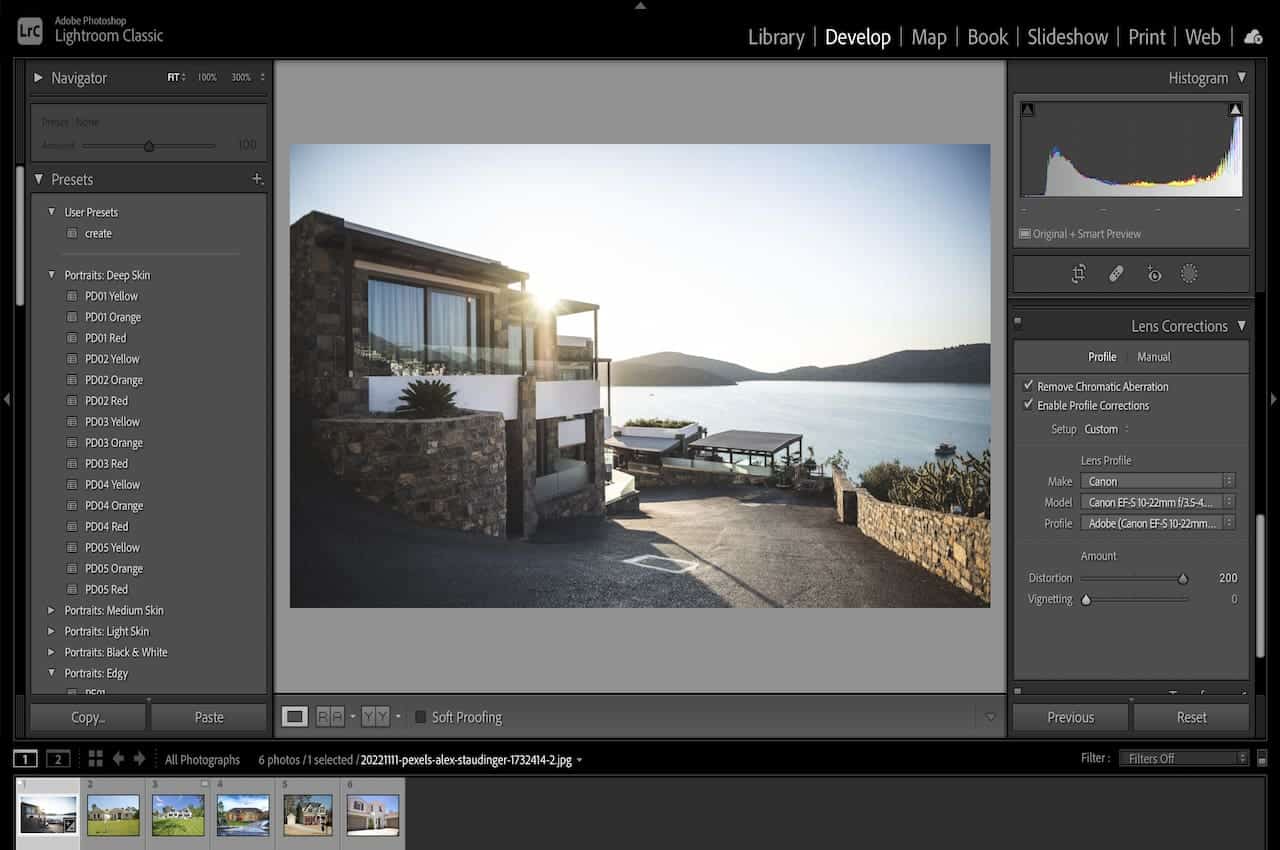
As an Amazon Associate we earn from qualifying purchases.
Capturing clean real estate images is crucial for success in this industry. However, there's one pesky issue that can often mess up your shots: chromatic aberration. What is chromatic aberration, you might ask? I'll dive into that, along with the various types of it and practical techniques to fix this challenge.
Quick Navigation
Chromatic aberration, also called purple fringing or color fringing, is the effect that occurs when color wavelengths are focused at varying points on the focal plane. Generally, the focal plane is your sensor's point of focus, where all color wavelengths join to be properly captured and recorded.
Chromatic aberrations are caused by varying light wavelengths moving through the lens at varying speeds, making it challenging for some lenses to focus every color on a common focal point. Due to this, your image may appear blurred or with the edges having blue, purple, red, yellow, green, or magenta colors.

Generally, different lenses have different refractive indexes. Since aberrations depend on the reflective index of the lens, you can get the following types of chromatic aberrations depending on your lens.
Lateral chromatic aberrations are also referred to as transverse aberrations. It is a type of aberration that occurs when varying color wavelengths come at a given angle and focus at different positions on the same focal plane.
This type of aberration is only visible at the edges of the frame and not at the center. Although you cannot avoid it completely, lenses with several elements of different refractive indexes can help reduce it.
Keeping in mind that some lenses might have color fringing that matches blue and its complimentary yellow color, as well as red and its corresponding cyan color, low dispersion ED glass helps reduce it.
Longitudinal chromatic aberration is also referred to as axial chromatic aberration, bokeh fringing, or LoCA. It occurs when varying color wavelengths fail to converge at a common position after passing through the lens.
Due to this, this type causes blurred hues behind and in front of the focus position, and the fringing is visible in the entire image, including at the center.
Generally, a blur of red-green, blue-yellow, or magenta-purple around the edges of your frame can affect the image's true colors. The following tips can help you eliminate the unnatural color on the edges of your image and improve the image quality.

After taking the wide-angle photos, you can use Lightroom to correct chromatic aberrations during the post-production phase. Lightroom is versatile and allows you to manually or automatically correct aberrations in the lens correction module using the following steps.
The curvature of the lens elements makes aberrations more visible at the edges of the frame than at the center. If you reframe the shot and try to move the main subject to the center, there are chances that you will end up with little to no aberrations.
Alternatively, you can take the photos with a larger background and noticeable aberrations around the edges and crop out the areas with aberrations if you intend to share the image online or print small formats where pixelation might not be noticeable.
Capturing scenes with high contrast, such as capturing a subject against a bright background or shooting real estate exteriors with the property extending from bright to shadowed areas, increases the chances of getting aberrations.
You can avoid the aberrations by shooting in evenly lit scenes, such as taking exterior photos with good ambient lighting extending to all corners of the property.

You can have a negative chromatic aberration if the blue rays deviate strongly, making them originate at the right of the red focus. On the other hand, a positive chromatic aberration is when the blue focus is left of the red one.
The aperture settings can affect the chromatic aberrations. Generally, lenses will try to blur the background and focus on the main subject when using wider apertures, increasing the chances of aberrations. On the other hand, narrower apertures will make everything in the frame sharp and focused.
You can capture real estate photos with color fringes even with high-end lenses and good framing skills. Knowing what chromatic aberration is can help you avoid it when shooting or even use photo-editing software such as Lightroom to remove it during post-processing.
